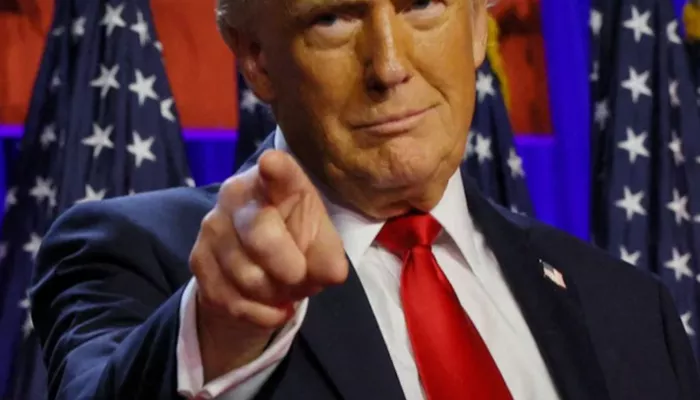The incoming Trump administration is moving forward with plans to implement strict border measures and ramp up the detention and deportation of migrants, according to multiple sources familiar with the discussions. The administration’s approach marks a shift from President Trump’s first term, which focused on building a border wall, to an emphasis on interior enforcement and the removal of undocumented immigrants already in the United States.
Central to the plan is the expansion of detention facilities to accommodate a large-scale deportation effort. Sources say the transition team is evaluating metropolitan areas for potential detention space and preparing executive actions to restore hardline immigration policies from Trump’s first term. These measures are expected to be rolled out quickly once Trump assumes office.
One of the key components of the strategy includes resurrecting the controversial “Remain in Mexico” program. This policy, which requires migrants to stay in Mexico during their U.S. immigration proceedings, would be reinstated, alongside revisions to asylum restrictions and the revocation of Biden-era protections for migrants. The administration is also expected to reverse current ICE enforcement priorities and end humanitarian parole programs introduced by President Biden.
An additional executive order under consideration would mandate the detention of migrants, ending the practice of releasing individuals due to limited federal resources. The goal is to detain and deport migrants at a much larger scale.
The Trump team is also reviewing regional capabilities to house migrants, including the possibility of building new detention centers in major cities. This aligns with previous plans by Homeland Security officials to expand detention capacity in anticipation of border surges.
Family detention, a practice heavily criticized by immigrant advocates and ended by the Biden administration, is also likely to make a comeback. Trump’s transition spokeswoman, Karoline Leavitt, emphasized that the administration would follow through on its campaign promises, citing the re-election of Trump as a mandate to enact these changes.
A key challenge for the incoming administration will be securing funding. In the absence of additional congressional support, sources say the Trump team is considering reallocating agency funds and potentially declaring a national emergency to access Pentagon resources, a move made during Trump’s first term.
The private sector is also preparing to support the plan. CoreCivic, one of the largest private prison operators in the U.S., has indicated it is ready to expand detention capacity. The federal government is also expected to rely on county jails to accommodate the influx of detainees.
Several key figures have been appointed to oversee the plan, including veteran immigration official Tom Homan as “border czar,” Stephen Miller as deputy chief of staff for policy, and South Dakota Governor Kristi Noem as head of the Department of Homeland Security. Miller, who has been a vocal advocate for stricter immigration policies, has outlined plans for large staging facilities near the border and for renewed worksite raids, which were suspended under the Biden administration.
Behind the scenes, former Border Patrol Chief Rodney Scott and Michael Banks, an adviser to Texas Governor Greg Abbott on border issues, are also involved in shaping the administration’s immigration strategy.
Homan, who previously oversaw family separations and was instrumental in high deportation levels during the Obama administration, is expected to lead the push for targeted operations focused on national security and public safety threats. His appointment signals a serious commitment to aggressive immigration enforcement in the early days of the administration.
Trump’s previous term saw more than 1.5 million deportations, though that number remains lower than the 2.9 million deportations during Obama’s first term. In addition, millions were turned away at the border under a Covid-era policy, which continues to be used during Biden’s presidency.
Sources suggest the incoming administration’s efforts will be focused initially on migrants already in the U.S., with executive orders expected to be signed in the first few days to curb the flow of new arrivals and focus on those within the country.
Despite the complexity of the plans, the Trump administration is set to implement its hardline immigration agenda with a renewed focus on enforcement and deportation.
Related topics:
- Trump’s Election Raises Visa Worries for International Students
- Palestinian Canadians Decry ‘Betrayal’ Over Struggling Gaza Visa Program
- Los Angeles Approves ‘Sanctuary City’ Law to Safeguard Migrants


